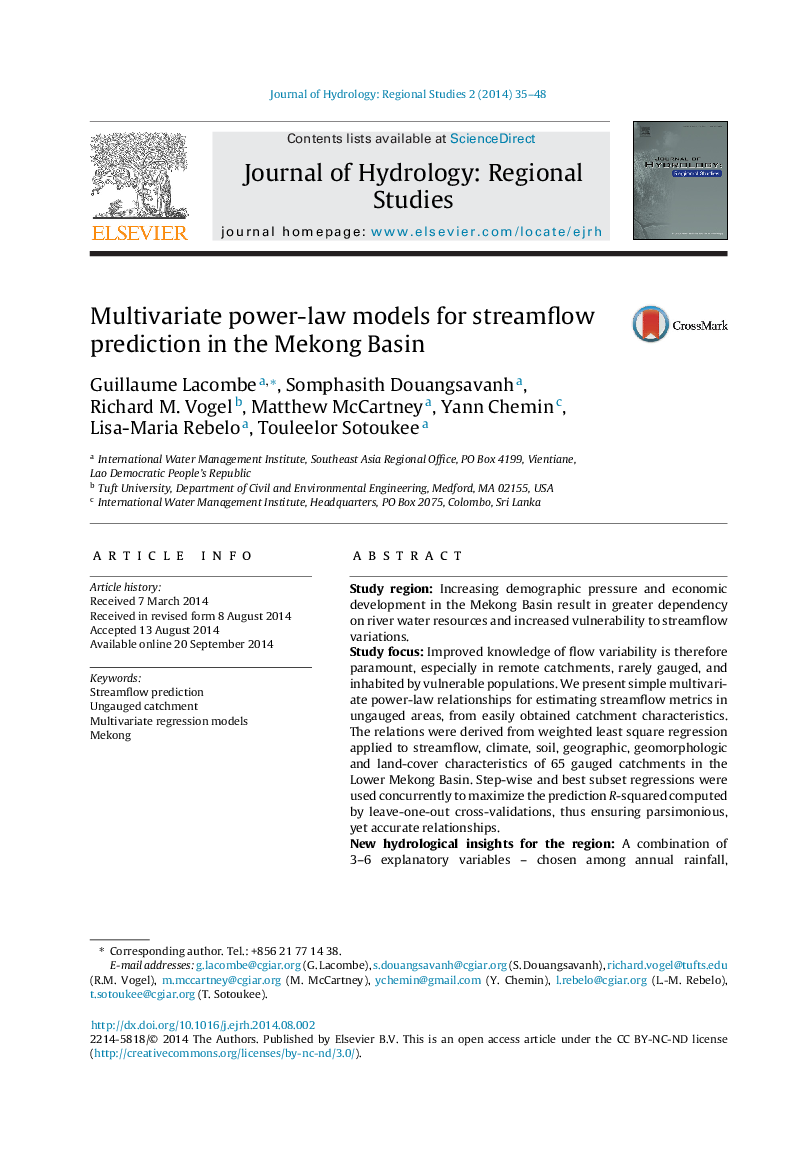| کد مقاله | کد نشریه | سال انتشار | مقاله انگلیسی | نسخه تمام متن |
|---|---|---|---|---|
| 4435282 | 1620142 | 2014 | 14 صفحه PDF | دانلود رایگان |
• We predict flow metrics in ungauged catchments of the Lower Mekong Basin.
• Basin area, drainage density and annual rainfall explain 95% of mean annual flow.
• Increasing paddy area will decrease low flows.
• Compared to geomorphology and rainfall, forest cover has minor effect on flows.
Study regionIncreasing demographic pressure and economic development in the Mekong Basin result in greater dependency on river water resources and increased vulnerability to streamflow variations.Study focusImproved knowledge of flow variability is therefore paramount, especially in remote catchments, rarely gauged, and inhabited by vulnerable populations. We present simple multivariate power-law relationships for estimating streamflow metrics in ungauged areas, from easily obtained catchment characteristics. The relations were derived from weighted least square regression applied to streamflow, climate, soil, geographic, geomorphologic and land-cover characteristics of 65 gauged catchments in the Lower Mekong Basin. Step-wise and best subset regressions were used concurrently to maximize the prediction R-squared computed by leave-one-out cross-validations, thus ensuring parsimonious, yet accurate relationships.New hydrological insights for the regionA combination of 3–6 explanatory variables – chosen among annual rainfall, drainage area, perimeter, elevation, slope, drainage density and latitude – is sufficient to predict a range of flow metrics with a prediction R-squared ranging from 84 to 95%. The inclusion of forest or paddy percentage coverage as an additional explanatory variable led to slight improvements in the predictive power of some of the low-flow models (lowest prediction R-squared = 89%). A physical interpretation of the model structure was possible for most of the resulting relationships. Compared to regional regression models developed in other parts of the world, this new set of equations performs reasonably well.
Journal: Journal of Hydrology: Regional Studies - Volume 2, November 2014, Pages 35–48
